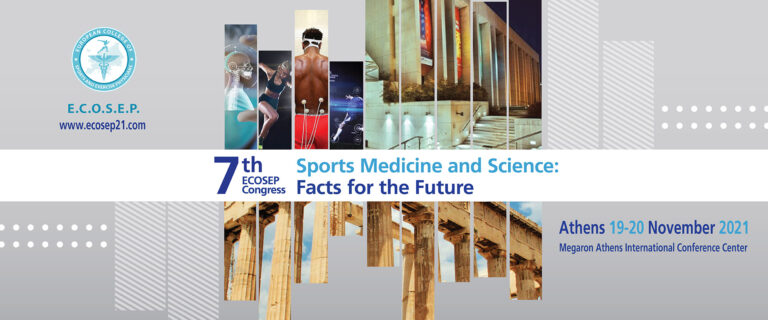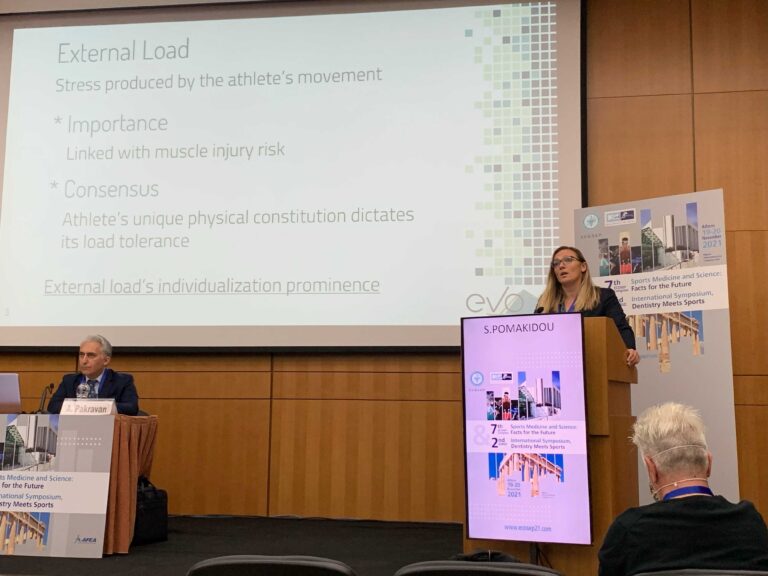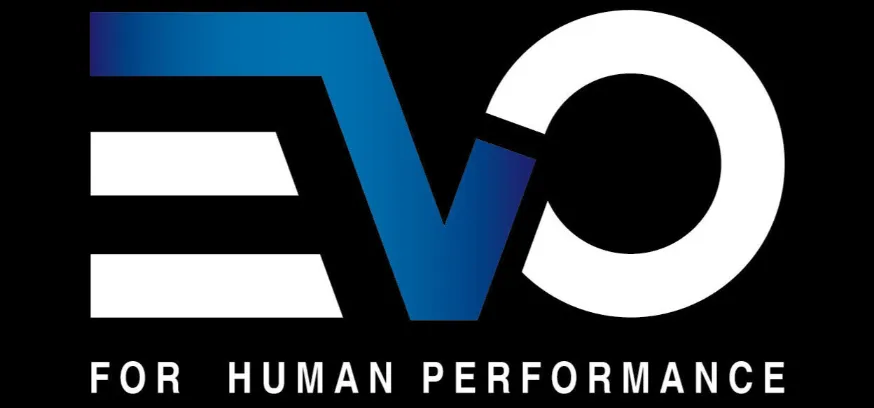7th ECOSEP Congress Attendance
Our attendance at the 7th ECOSEP Congress in Athens, completed with great success and… scientific reflection!

We had a great time with some of the top-level experts from around the world in the fields of Sports Science, Medicine and BioEngineering, exchanging knowledge on the latest developments in Sports and Exercise. At the same time, we were privileged to share our latest research portfolio. Our R&D department pinpoints two great issues of the established knowledge and proposes innovative ways to tackle them.
ACWR
Firstly, it is the controversial Acute / Chronic Workload Ratio (ACWR) which recently made a striking impression. What is essentially the workload and how does it get measured? Is it well defined and expressed in a meaningful unit of measurement? Even so, do the currently utilized (standard) intensity zones effectively reflect each athlete’s performance profile?In EVO4HP, we approach this issue in a personalized way. Specifically, we demarcate the workload to individualized zones of intensity, so that the upper ones (of greater interest) contain sufficient observations, as opposed to the conventional practices. By doing so, the workload is uniquely mapped to each athlete and the ACWR becomes a more objective metric. Hence, the latter’s computation on the upper zones (4, 5, 6) leads to better insights upon the athlete’s effort and performance.GRF
Secondly, it is the case of the Ground Reaction Forces (GRF); a widely used biomechanical measure, referring to the forces exerted by the ground, while in contact with the human body. GRFs constitute a good starting point of investigation when it comes to relating the external biomechanical load of the body with the response of its tissue construction. Nevertheless, the “gold-standard” means of measuring them are the force plates which are precise enough, yet cumbersome and expensive. This fact makes them inappropriate to be used in the real field.In EVO4HP, we smooth the way to measure GRFs without making use of force plates. That is, our second scientific proposal refers to the prediction of the GRFs through GPS sensor data (wearable technology) by leveraging Artificial Intelligence (AI). In particular, we developed an Artificial Neural Network (ANN) which is capable of translating input sensor data to 3-dimensional GRFs, achieving an accuracy of almost 97%. Therefore, the end user can still monitor GRFs without using force plates, at all!Both research components were developed in a cost-effective way (Open Source Python libraries etc), while delivering high accuracy and remarkable insights.
All in all, and as per the Congress’s theme “Sports Medicine & Science: Facts for the Future”, it was a unique opportunity for us to both access the latest developments in the challenging domain of Sports and share our unique approach to tackle some of the most profound issues of it. And all that, in a stimulating professional and aesthetic environment, the city of Athens can offer. EVO4HP faithful to its principles to create knowledge, foster innovation and pursue excellence continues its journey… See you all around in the next Conference!
